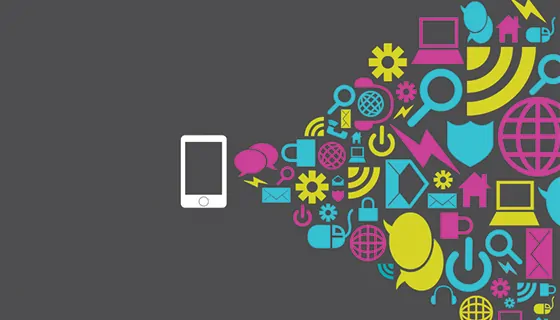Your Genesys Blog Subscription has been confirmed!
Please add genesys@email.genesys.com to your safe sender list to ensure you receive the weekly blog notifications.
Subscribe to our free newsletter and get blog updates in your inbox
Don't Show This Again.

Do you know your multi-channel from your multimodal from your omnichannel? In this series, we’ll explain the differences between these terms from a Genesys perspective, exploring the pros and cons. To start, let’s look at the meaning—and limitations—of multi-channel customer engagement…
In the context of customer experience (CX), the term multi-channel means exactly what its name suggests: the ability to engage with customers over multiple communications channels—ranging from telephones to texts to tweets and beyond—instead of just one.
Technically speaking, multichannel CX has been around for a long time. Established retailers have offered customer support through postal mail, telephone, and in-store retail service for decades. What is new and has led to an upsurge in the term’s popularity over the past decade is the rise of the mobile Internet, which enables both customers and the companies they engage with to take advantage of an ever-growing variety of channels, particularly via smartphone apps and social media.
The primary benefits of multi-channel CX include creating a more dynamic and versatile experience for customers, deepening customer relationships, increasing customer retention, and reducing time-to-resolution by engaging with customers on their preferred channels—resulting in better CX and a better business all around.
Some of the most popular communications options available today to customers—and customer service agents—include: voice, text, email, live chat, social media, and the contact form, FAQ, or self-help forums on a company website. Some mobile apps and devices even permit customers to speak with agents through a live agent-assisted video chat, such as the Mayday function on Amazon’s Kindle Fire tablets:
And some new customer engagement channels related to the Internet of Things almost defy categorization.
Yet it’s the more traditional CX channels, like voice and self-help webpages, that remain the most popular ways for customers to engage with brands, especially when seeking support. In Forrester’s recent Trends 2015: The Future of Customer Service report, a survey of nearly 5,000 U.S. consumers found that of all available customer service channels, these were the percentages most used in the previous 12 months:
Customers have become accustomed to being able to engage in a multi-channel manner on a personal level—speak to friends on the phone, exchange text messages, and use email. From a CX perspective, ideally, the same channel flexibility should be possible when engaging with any company. If you decide to call a retail or ecommerce store to order a gift, you should be able to receive an email or text during that call that confirms the billing and shipping addresses. And with some organizations you certainly can. But other companies, both large and small, face certain technological and/or organizational obstacles, prohibiting engagement with customers across multiple channels easily and reliably. Some channels are so new that IT departments and CX leaders just haven’t caught up with them yet.
First, no one can argue with the practicality, from a customer’s perspective—and isn’t the customer always right?—of allowing them to engage with your company via whatever channels they choose. But from a business perspective, pulling together the staff and technology needed to field responses—or to reach out to customers proactively for marketing or sales initiatives—is another matter entirely. Just ask your CIO or CFO. Without the right infrastructure in place, offering more channels won’t necessarily be a recipe for success.
Second, even if your organization tries to implement robust multi-channel CX support, not all technology platforms connect well with each other. Indeed, strong walls still exist between departments in most organizations, and many companies segment their customer support teams by channel. That means that if you have a phone call with a sales agent at Brand X, it might not be possible for that person to access the email you sent Brand X earlier in the day—and, conversely, Brand X’s email support team might have no idea what you discussed with the voice support team. Someone at Brand X, somewhere, may see the angry tweet you post to Twitter, complaining about the miscommunication…but by then, from your perspective as a customer of this disjointed organization, it may already be too late for them to retain your business.
Despite its challenges, however, mastering the art of multi-channel engagement communications is a first essential step in developing your customer experience fluency from basic proficiency to native speaker. Stay tuned next as we move a step beyond multi-channel into the realm of the multimodal…
Subscribe to our free newsletter and get blog updates in your inbox.